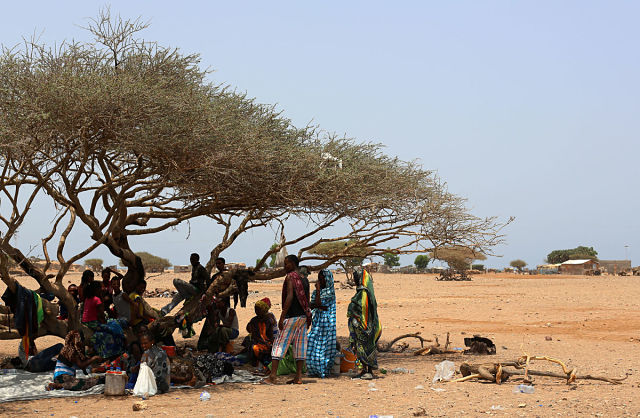 Migrants taking shelter from the heat in the town of Fantahero, Djibouti. Ethiopian migrants withstand harsh conditions and harsh treatment on the journey to Saudi Arabia. (PHOTOGRAPH BY LEX NIARCHOS)
Migrants taking shelter from the heat in the town of Fantahero, Djibouti. Ethiopian migrants withstand harsh conditions and harsh treatment on the journey to Saudi Arabia. (PHOTOGRAPH BY LEX NIARCHOS)
The other day, on the outskirts of Fantahero, a small village in the desert of northern Djibouti, Sebhatou Mellis was sheltering from a-hundred-and-four-degree heat in the shade of an acacia tree. Mellis, who is twenty-six and has the rangy build of a runner, was about a thousand miles away from his home, in the impoverished Tigray region of northern Ethiopia. There, he and his family had taken a government loan to help improve his farm, tried to invest it, and failed, he told me. “At the end, the money was finished, and all the people began to insult us and say that we took the money from the government and used it badly,” he said.
Mellis had come to Fantahero four days earlier, walking and hitching rides through the Danakil Desert with about a dozen other Tigrayans, a journey that took them about three weeks. Mellis’s ultimate destination, he hopes, will be Saudi Arabia, where, if he’s lucky, he’ll be able to work illegally. To get there, he will have to cross the Bab el-Mandeb Strait, which separates the Middle East from the Horn of Africa, and navigate his way through war-torn Yemen. “I left to repay my debts, not to die,” he said. “But if I die, at least I will liberate myself from poverty.”
The route through Djibouti and Yemen to Saudi Arabia is an ancient one. Some seventy thousand years ago, early man left Africa across the Bab el-Mandeb. The migration began the process by which modern humans settled the Eurasian continent. The historical connection between this part of Africa and the Middle East stretches through history. Fifteen hundred years ago, the Ethiopian Aksumite Empire extended into the modern Middle East and controlled parts of Yemen.
—
Join the conversation on Twitter and Facebook.

























